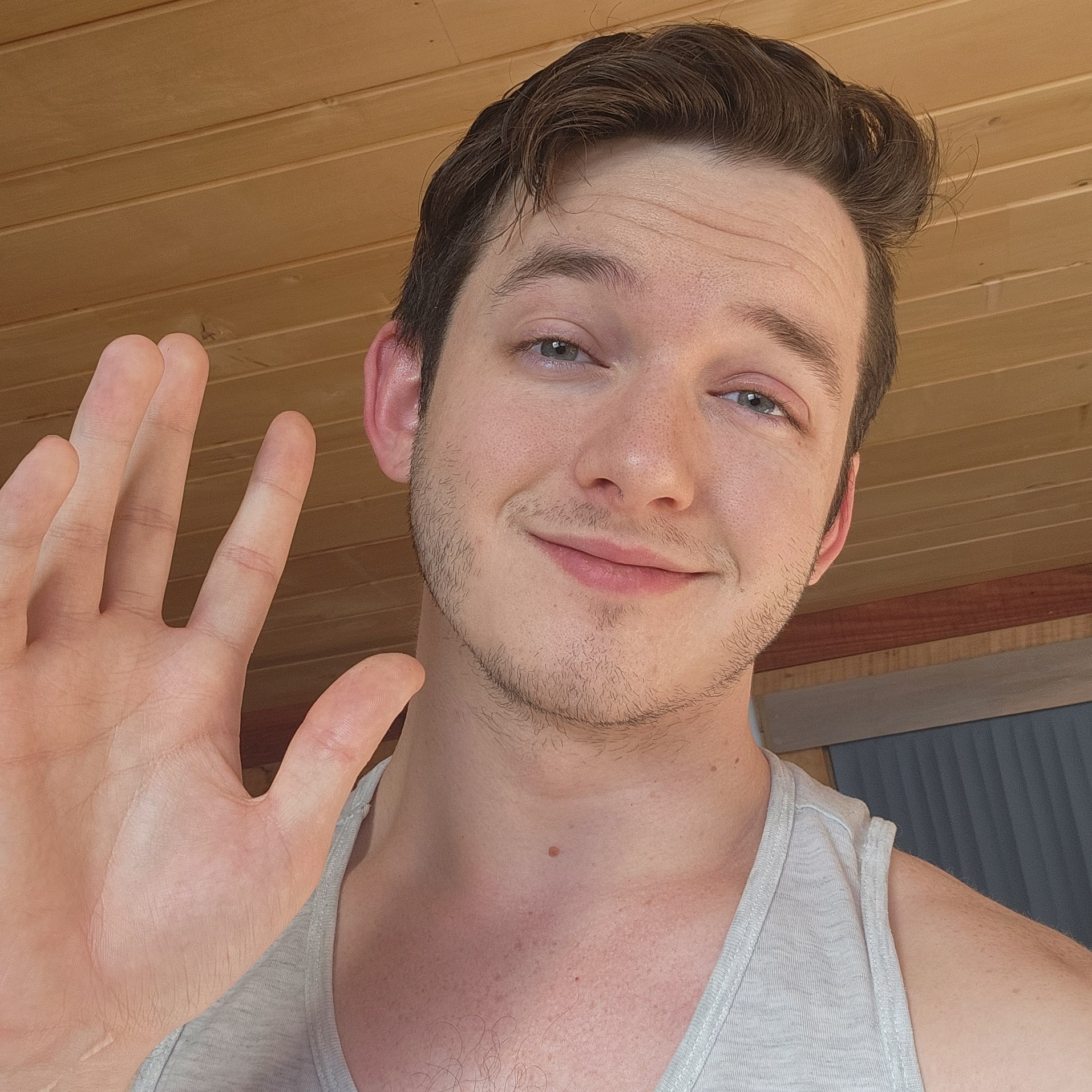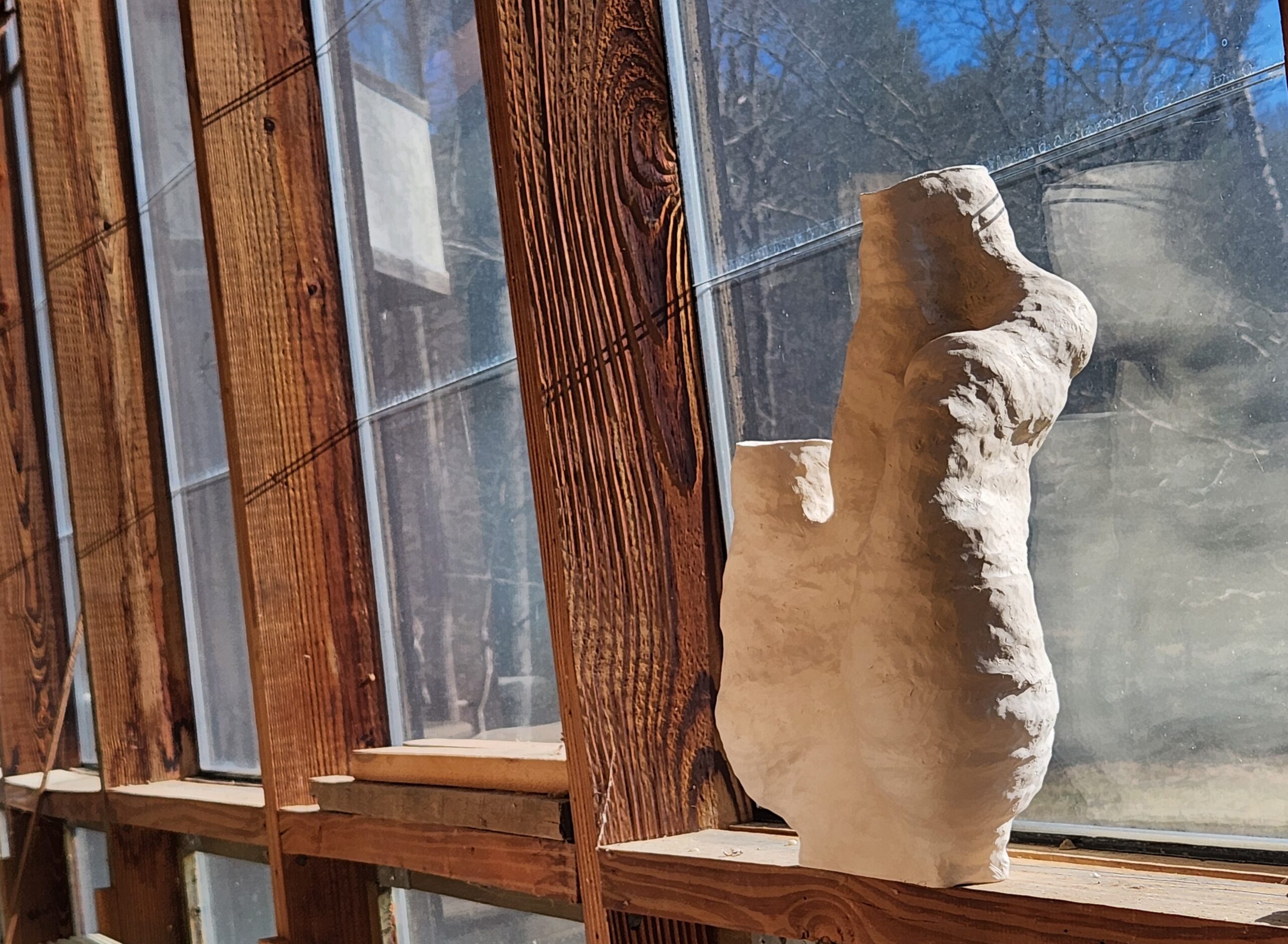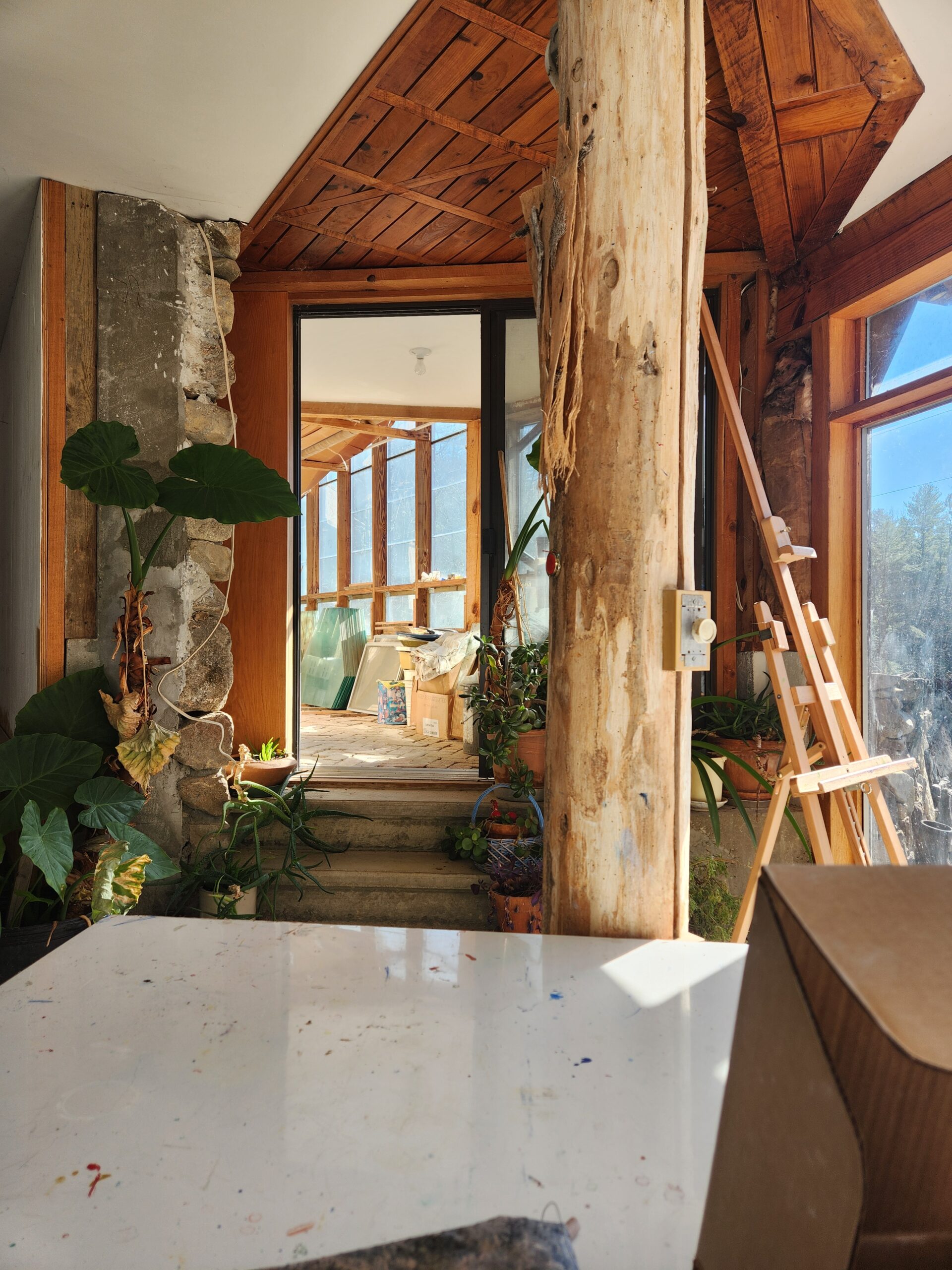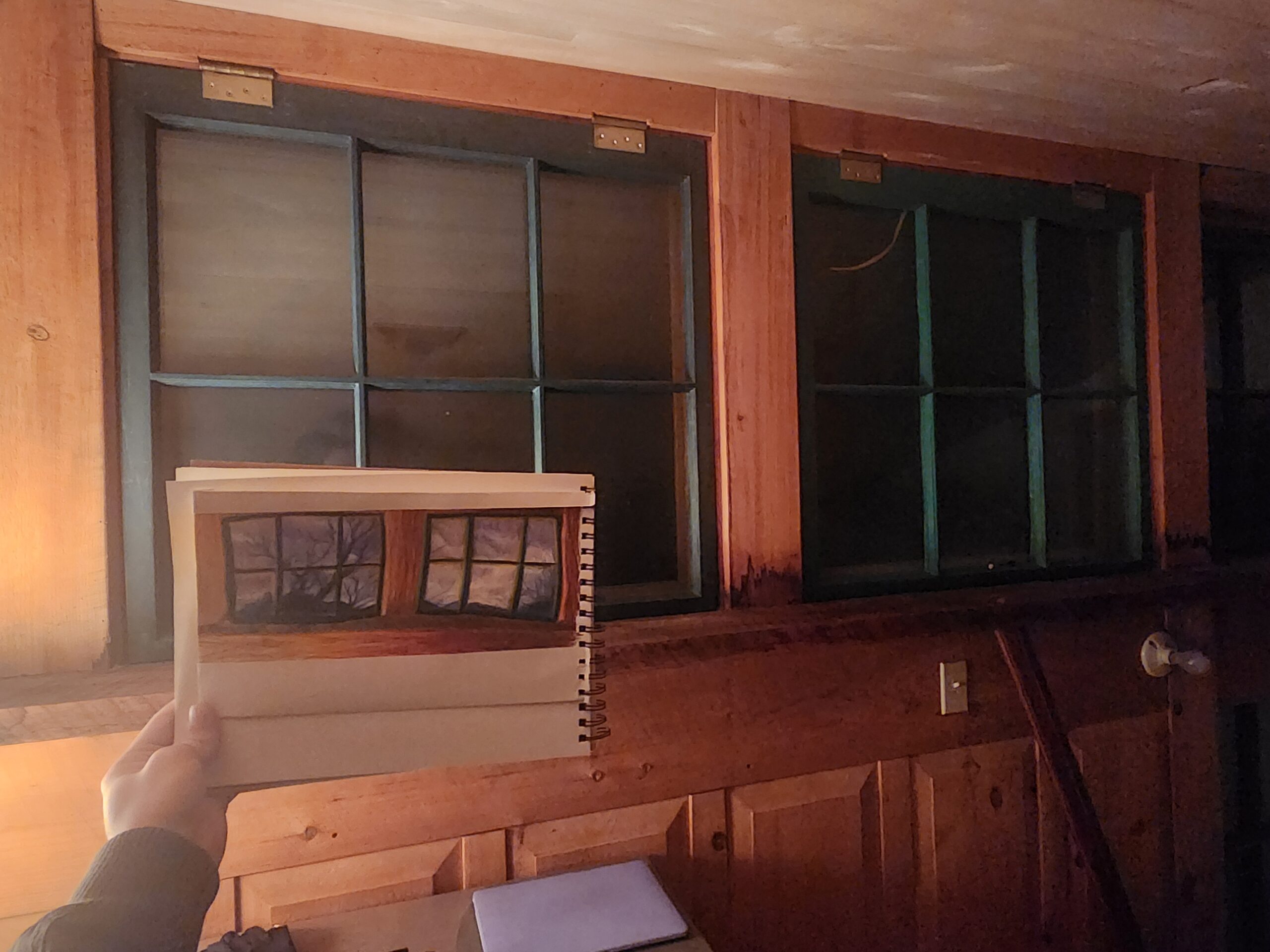
Please find Joshua’s responses to our questions below.
You can learn more about Joshua’s work and research interests here.
If it qualifies as a tax break, a heart break, or a mental break, it may be a part of my work. As a trans person navigating life with invisible disabilities, my journey has been defined by resilience, empathy, and a commitment to amplify the voices of marginalized groups. I share diverse perspectives, focusing on contemporary experiences of queer and disabled individuals to illuminate the richness of our communities and the intersections therein. By portraying narratives of marginalized individuals, I seek to dismantle societal barriers, fostering empathy, understanding, and inclusivity.
While at Azule, I made a porcelain vase as part of a larger series. In my spare time between sessions building pottery, I made sketches of the residence space. Starting in November 2023, I began practicing to master a pinched vase technique done with thin strips of porcelain to create lightweight vases that could be held more easily by people with arthritis, tendonitis, and other disorders that reduce muscle tone. These vases are built with organic shapes and curves that create natural hand holds and reduce the need to “grip” and engage the muscles in the hand when holding each vessel. The vase I made during my time here at Azule was loosely inspired by the architecture of the residence itself and the wider foundation that Camille dug herself. The average base of these vases in the past has ranged from 1-3 inches, however while at this residency I completed a vase with a base double the size of any previous vessels in this series at 6 inches wide with an overall height and width of to match this larger foundation. In total this vase will weight about 2 pounds or half the weight of an average thrown vase of equivalent size.
Why is a residency important to you?
Coming to a residency was important to me as an opportunity to push boundaries with assistance from other artists’ influences and the studio space and access I would be afforded to dig in and make something special that I would not have been able to make working at my home studio.
If you could sum up your practice in one word, what would it be? Explain.
How would you define “success” as an artist?

Images from Joshua’s time in residence. Courtesy of the artist.

